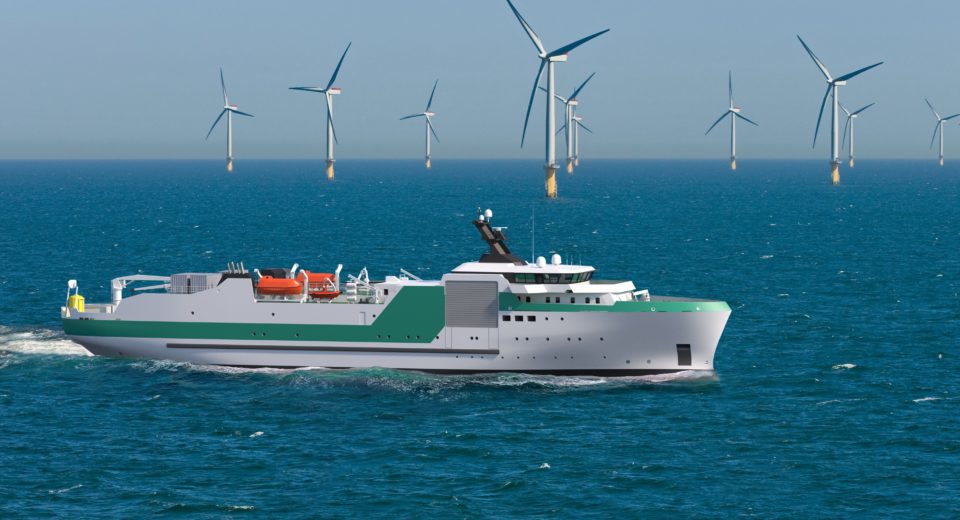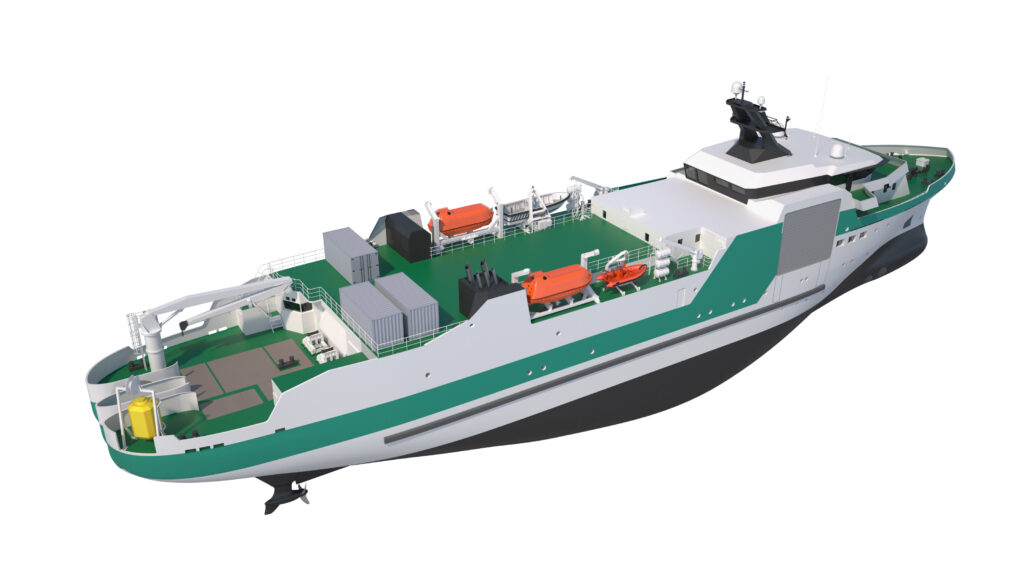In order to further penetrate new markets, PIRIOU has developed a new cable layer vessel, designed to lay and repair both fiber-optical and energy cables. This vessel will be able to lay cables on wind farms as well as repair a damaged cable on the continental shelf or deep sea.

As PIRIOU’s recently awarded hydrogen hybrid CTV, this high-tech product perfectly fits the group’s strategy and answers our customers’ requirements to make maintenance operations easier, to optimise operating costs and answer safety and new environmental regulations issues.
Vincent Faujour, PIRIOU Group C.E.O. says: "This project represents one year of intense teamwork for PIRIOU INGENIERIE design department. The result reflects their commitment and allows us to widen our product range with the cable vessels segment".
Cable laying and repairing vessel with low environmental impact
The vessel is entirely designed and developed by the Piriou Ingenierie teams in ConcarneauFrance.
- There is a great part of PIRIOU’s DNA in this project: her slender hull -issued from a model that widely demonstrated sea performances- was studied again and adapted to take into account requirements related to sea keeping, crew working comfort and cable works whereas ensuring speed and dynamic positioning performances featuring installed capacity and optimised consumption. With this especially optimised hull, this cable vessel will burn less than 10t of fuel per day in transit at 12.5 kn and is already compliant with the IMO III regulation.
- Equipped with two storage tanks, she is able to embark and handle up to 1000 tonnes cables -energy of optical-fiber- as one of her tanks is fitted with a carousel to deploy the energy cable.
The R.O.V room, integrated in the superstructures, makes a weather protection for the R.O.V and allows being deployed in very good safety conditions.

- The propulsion design was especially developed for this vessel in order to optimise fuel consumption according to user profile whereas reducing maintenance costs and providing the redundancy linked to the activity.
- The general arrangement was designed to get a vessel with lower aerodynamic profile and offering the capabilities of a repair cable vessel. The result is a vessel featuring reduced superstructures volume and indoor optimised and functional areas
- Likewise, accommodation was designed to make life comfortable on board. A careful thought was given to colours, materials and clever interior fittings were conceived.
Main characteristics
| Length overall | 100 m |
| Breadth overall | 18 m |
| Max. speed | 14.5 kn |
| Max. deadweight | 2100 t |
| Power | 3 200 kW |
| Range | 35 days or 10,000 miles @ 12 kn |
| Crew | 49 pers |
| Special personnel | 27 pers |